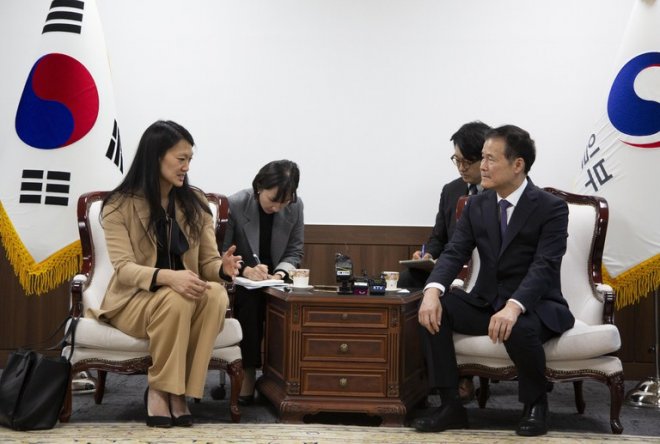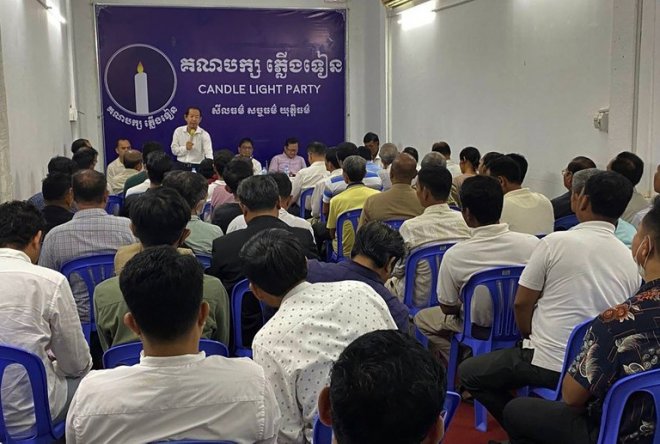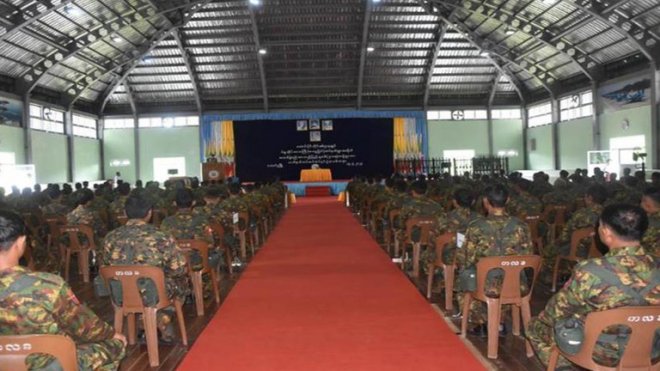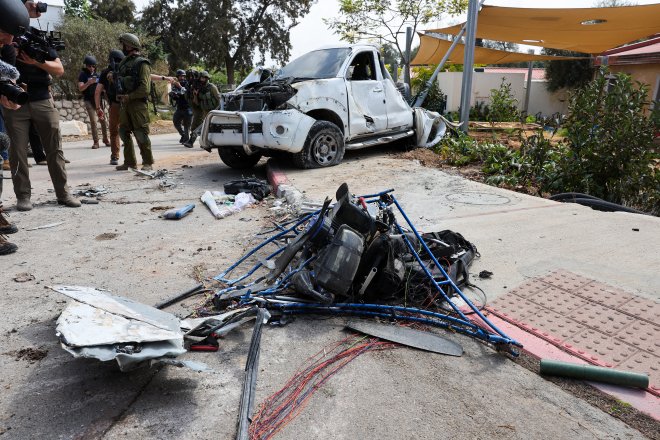Lao president visits village for residents displaced by rail project
Laos’ president urged local officials to help villagers with jobs and subsistence farming during a visit to a newly built community where 400 residents displaced by the US$5.9 billion China-Laos railway project have recently moved.
President Thongloun Sisoulith questioned the villagers in Luang Prabang province’s Xieng Ngeun district over whether the rows of red-roofed homes represented an improvement over their previous livelihood.
“He asked the affected villagers to compare between living in the old village and the new village,” a local official told Radio Free Asia. “How do they feel? Are they happy or not? If they have problems, what are the problems? He wanted to help them.”
It wasn’t clear what they told the president, but one resident of Buam Aor village told RFA that people had no choice but to follow government orders and relocate.
“Villagers have no money and no land for agriculture,” he said. “They have urged the government and related sectors to help them.”
![]() Laos’ President Thongloun Sisoulith arrives for a meeting with Japanese Prime Minister Fumio Kishida at the prime minister’s office in Tokyo, May 25, 2023. Credit: Shuji Kajiyama, Pool/AP
Laos’ President Thongloun Sisoulith arrives for a meeting with Japanese Prime Minister Fumio Kishida at the prime minister’s office in Tokyo, May 25, 2023. Credit: Shuji Kajiyama, Pool/AP
The president’s visit to Buam Aor on Oct. 6 comes as a number of large-scale development projects in recent years – including dams, mines and the 422-kilometer (262-mile) railway – have forced thousands of Laotians from their longtime villages.
In the case of the railway, many families were pushed out of homes that had spacious farmland nearby to make way for track, stations, tunnels and bridges. They were then relocated to more confined spaces within resettlement villages set up by the Lao-China Railway Company.
Struggling to make a living
When the railway opened in 2021, Sisoulith called it “a significant milestone in history and a new era for the development of modern infrastructure” in the country
The World Bank said that the Vientiane-Kunming route would boost tourism, freight transport and trade in agriculture, giving Laos’ pandemic-hit economy a shot in the arm.
For China, it’s seen as the first stage of a future high-speed rail link through Laos to Thailand, Malaysia and Singapore that would further cement China’s status as the dominant trading partner with Southeast Asia.
While some villagers have benefited from economic development along the route of the railway, others have told RFA that they are struggling to make ends meet.
In Buam Aor, more than 100 two-story homes with cement foundations, a public water system and electricity were built along the Mekong River in 2022. The village is about 24 km (15 miles) from Luang Prabang.
The local official told RFA that most people were better off because of the new village’s paved roads, school and medical clinic. However, some are still complaining that they want more land for farming and access to better jobs, he said.
“But there isn’t funding for that,” he said. “Officials are searching for funding from other projects for them.”
Translated by Sidney Khotpanya. Edited by Matt Reed and Malcolm Foster.
[圖擷取自網路,如有疑問請私訊]
President Thongloun Sisoulith questioned the villagers in Luang Prabang province’s Xieng Ngeun district over whether the rows of red-roofed homes represented an improvement over their previous livelihood.
“He asked the affected villagers to compare between living in the old village and the new village,” a local official told Radio Free Asia. “How do they feel? Are they happy or not? If they have problems, what are the problems? He wanted to help them.”
It wasn’t clear what they told the president, but one resident of Buam Aor village told RFA that people had no choice but to follow government orders and relocate.
“Villagers have no money and no land for agriculture,” he said. “They have urged the government and related sectors to help them.”
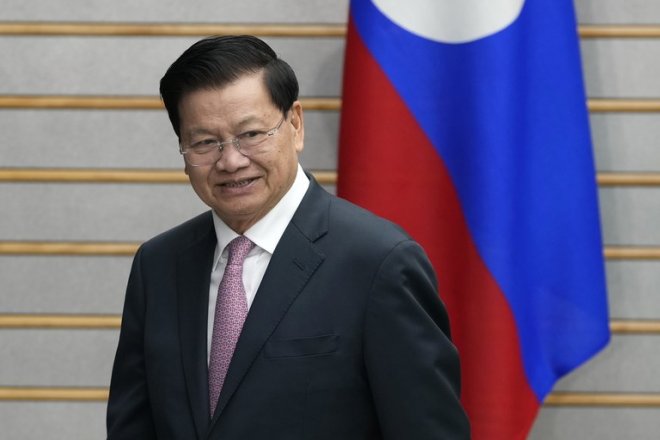 Laos’ President Thongloun Sisoulith arrives for a meeting with Japanese Prime Minister Fumio Kishida at the prime minister’s office in Tokyo, May 25, 2023. Credit: Shuji Kajiyama, Pool/AP
Laos’ President Thongloun Sisoulith arrives for a meeting with Japanese Prime Minister Fumio Kishida at the prime minister’s office in Tokyo, May 25, 2023. Credit: Shuji Kajiyama, Pool/APThe president’s visit to Buam Aor on Oct. 6 comes as a number of large-scale development projects in recent years – including dams, mines and the 422-kilometer (262-mile) railway – have forced thousands of Laotians from their longtime villages.
In the case of the railway, many families were pushed out of homes that had spacious farmland nearby to make way for track, stations, tunnels and bridges. They were then relocated to more confined spaces within resettlement villages set up by the Lao-China Railway Company.
Struggling to make a living
When the railway opened in 2021, Sisoulith called it “a significant milestone in history and a new era for the development of modern infrastructure” in the country
The World Bank said that the Vientiane-Kunming route would boost tourism, freight transport and trade in agriculture, giving Laos’ pandemic-hit economy a shot in the arm.
For China, it’s seen as the first stage of a future high-speed rail link through Laos to Thailand, Malaysia and Singapore that would further cement China’s status as the dominant trading partner with Southeast Asia.
While some villagers have benefited from economic development along the route of the railway, others have told RFA that they are struggling to make ends meet.
In Buam Aor, more than 100 two-story homes with cement foundations, a public water system and electricity were built along the Mekong River in 2022. The village is about 24 km (15 miles) from Luang Prabang.
The local official told RFA that most people were better off because of the new village’s paved roads, school and medical clinic. However, some are still complaining that they want more land for farming and access to better jobs, he said.
“But there isn’t funding for that,” he said. “Officials are searching for funding from other projects for them.”
Translated by Sidney Khotpanya. Edited by Matt Reed and Malcolm Foster.
[圖擷取自網路,如有疑問請私訊]
|
本篇 |
不想錯過? 請追蹤FB專頁! |
| 喜歡這篇嗎?快分享吧! |
相關文章
AsianNewsCast









